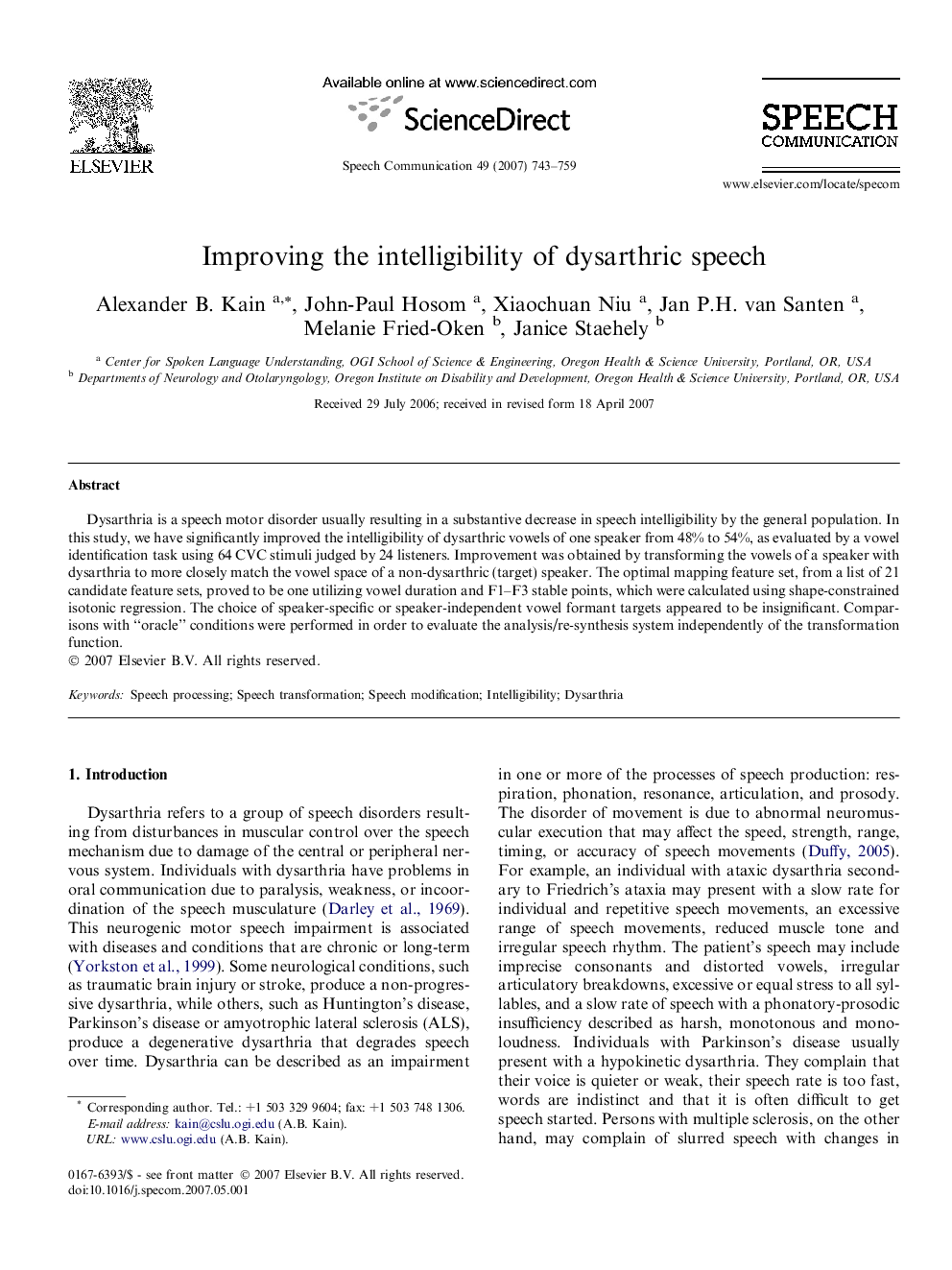| کد مقاله | کد نشریه | سال انتشار | مقاله انگلیسی | نسخه تمام متن |
|---|---|---|---|---|
| 566379 | 875972 | 2007 | 17 صفحه PDF | دانلود رایگان |

Dysarthria is a speech motor disorder usually resulting in a substantive decrease in speech intelligibility by the general population. In this study, we have significantly improved the intelligibility of dysarthric vowels of one speaker from 48% to 54%, as evaluated by a vowel identification task using 64 CVC stimuli judged by 24 listeners. Improvement was obtained by transforming the vowels of a speaker with dysarthria to more closely match the vowel space of a non-dysarthric (target) speaker. The optimal mapping feature set, from a list of 21 candidate feature sets, proved to be one utilizing vowel duration and F1–F3 stable points, which were calculated using shape-constrained isotonic regression. The choice of speaker-specific or speaker-independent vowel formant targets appeared to be insignificant. Comparisons with “oracle” conditions were performed in order to evaluate the analysis/re-synthesis system independently of the transformation function.
Journal: Speech Communication - Volume 49, Issue 9, September 2007, Pages 743–759